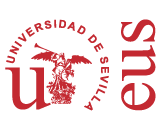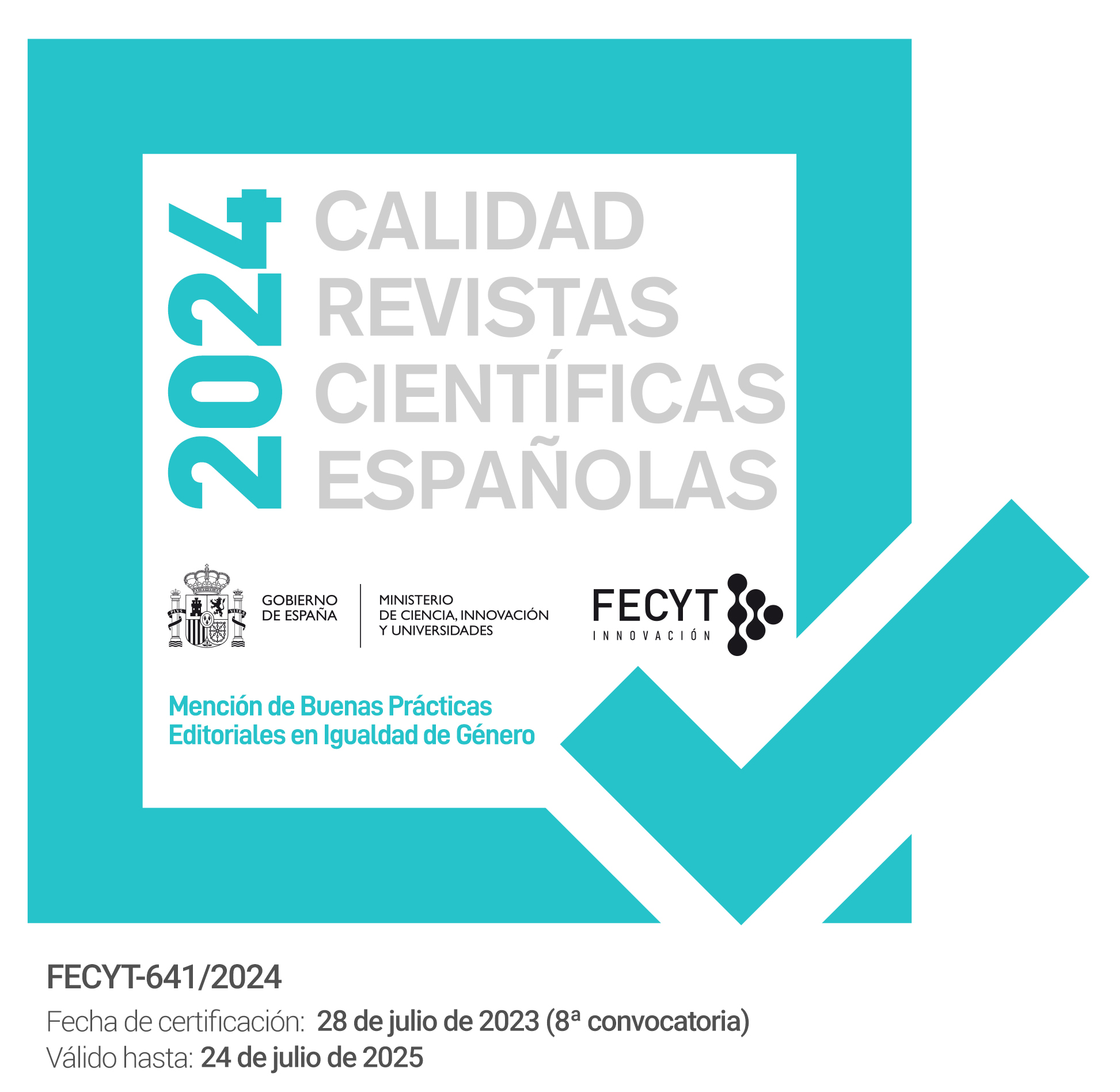Denouncing Racial and Gender Stereotypes in Young Adult Literature: Translations into Spanish of on the Come Up (2019) and Concrete Rose (2021) by Angie Thomas
DOI:
https://doi.org/10.12795/PH.2024.v38.i02.09Keywords:
young adult literature, racism, sexism, translation, Angie ThomasAbstract
This work aims at analysing racial and gender stereotypes in current young adult literature. I will discuss how these topics have been approached in the translations into Spanish of On the Come Up (2019) and Concrete Rose (2021) by American writer Angie Thomas. Critical and descriptive norms by Toury (1995: 56-61) have been followed. Young adult literature and its translation have recently focused on these themes, which have been silenced for a long time. Readers must be conscious of being part of a society which respects gender and race equality and breaks traditional stereotypes. The discussion will determine whether the translators have maintained the writer’s intention, or whether there has been any type of manipulation due to pedagogical or moral criteria (Shavit, 2006).
Downloads
References
Alfando, J. y Wahyuni, D. (2022). Being Black and Being a Woman: Double Oppression Experience in Angie Thomas “On the Come Up”. E-Journal of English Language and Literature, 11(4), 508-522. 10.24036/ell.v11i4.118703
Almeida Junco, Y. y Guillard Limont, N. R. (2020). The importance of Black feminism and the theory of intersectionality in analysing the position of afro descendants. International Review of Psychiatry (Abingdon, England), 32(4), 327-333. https://doi.org/10.1080/09540261.2020.1772732
Baer, B. J. y Kaindl, K. (2018). Queering Translation, Translating the Queer: Theory, Practice, Activism. Routledge.
Brunette, L. (2000). Towards a Terminology for Translation Quality Assessment. The Translator, 6(2), 169-182. https://doi.org/10.1080/13556509.2000.10799064
Cerrillo Torremocha, P. y Sánchez Ortiz, C. (2016). Prohibido leer. La censura en la literatura infantil y juvenil contemporánea. Ediciones de la Universidad Castilla-La Mancha.
Colomer Martínez, T. (2010). Introducción a la literatura infantil y juvenil actual. Síntesis.
Crenshaw, K. (1991). Mapping the margins: Intersectionality, identity politics, and violence against women of color. Stanford Law Review, 43(6), 1241-1299. https://doi.org/10.2307/1229039
Fernández López, M. (2005). Children’s literature in Franco’s Spain: The effects of censorship on translations. Anuario de Investigación en Literatura Infantil y Juvenil, (3), 39-52.
García de Toro, C. (2020). La traducción de literatura infantil: Temas centrales y nuevas vías de investigación. Sendebar, (31), 461-478. https://doi.org/10.30827/sendebar.v31i0.13605
Gilbert-Hickey, M. y Green-Barteet, M. A. (Eds.). (2021). Race in Young Adult Speculative Fiction. University Press of Mississippi. https://doi.org/10.14325/mississippi/9781496833815.001.0001
Grey, I. (2021). Q & A with Angie Thomas. Publishers Weekly. https://www.publishersweekly.com/pw/by-topic/childrens/childrensauthors/article/85233-q-a-with-angie-thomas.html
Hanán Díaz, F. (2020). Sombras, censuras y tabús en los libros infantiles. Servicio publicaciones Universidad Castilla La-Mancha. https://doi.org/10.18239/arcadia.30.2020
Hassel, H. y Clasen, T. (2017). Introduction. En T. Clasen y H. Hassel (Eds.), Gender(ed) Identities: Critical Readings of Gender in Children’s and Young Adult Literature (pp. 1-8). Routledge.
Hill Collins, P. (2000). Black feminist thought. Knowledge, Consciousness, and the Politics of Empowerment. Routledge.
Hughes-Hassell, S. (2013). Multicultural Young Adult Literature as a Form of Counter-Storytelling. The Library Quarterly: Information, Community. Policy, 83(3), 212-228. https://doi.org/10.1086/670696
Hurtado Albir, A. y Molina, H. (2002). Translation Techniques Revisited: A Dynamic and Functionalist Approach. Meta, 47(4), 498-512.
Imani Murray, J. (2021). Educar en la igualdad y la diversidad a través de la literatura infantil y juvenil: Microestudio sobre las categorías de género, etnia y edad en tres obras norteamericanas. History of Education and Children’s Literature, 16(1), 349-370.
Long, S. (2021). Angie Thomas’ Concrete Rose Advocates For Black Men y Boys The Way Society Won’t. Refinery 29. https://www.refinery29.com/en-us/2021/01/10258681/angie-thomas-concrete-rose-interview
Lorenzo García, L. (2014). Paternalismo traductor en las traducciones del género infantil y juvenil. Trans, (18), 35-48. https://doi.org/10.24310/TRANS.2014.v0i18.3244
Mitchell, E. A. (2023). Black and African American. Journal of the Early Republic, 43(1), 85-100. https://doi.org/10.1353/jer.2023.0005
Nel, P. (2017). Was the Cat in the Hat Black? The hidden Racism of Children’s Literature and the Need for Diverse Books. Oxford University Press.
Oittinen, R. (2006). No innocent Act: On the Ethics of Translating for Children. En J. Van Coillie y W. P. Verschueren (Eds.), Children’s Literature in Translation (pp. 35-46). St. Jerome.
Panlay, S. (2016). Racism in Contemporary African American Children’s and Young Adult Literature. Palgrave McMillan.
Pereira Rodríguez, A. y Lorenzo García, L. (2020). Cinderboy and Snow White and the Seven Aliens: Analysis of the Rewriting of Two Classic Tales and Their Translations to Spanish. En L. Brugué y A. Llompart Pons (Eds.), Contemporary Fairy-Tale Magic. Subverting Gender and Genre (pp. 77-88). Brill.
Perera Santana, A. y Bautista García, A. (2019). Las princesas Disney y su huella en los cuentos actuales. Nuevos modelos para nuevos tiempos. Anuario de Investigación en Literatura Infantil y Juvenil, (17), 131-150. https://doi.org/10.35869/ailij.v0i17.1429
Shavit, Z. (2006). Translation of Children’s Literature. En G. Lathey (Ed.), The Translation of Children’s Literature: A Reader (pp. 25-41). Multilingual Matters.
Siebler, K. (2021). Black Women Shattering Stereotypes. A Streaming Revolution. Lexington Books.
Solórzano, D. G. y Yosso, T. J. (2002). Critical Race Methodology: Counter-Story-telling as an Analytical Framework for Education Research. Qualitative Inquiry, 8(1), 23-44. https://doi.org/10.1177/107780040200800103
Taguieff, P. A. (2021). The Force of Prejudice: On Racism and Its Doubles. University of Minnesota Press.
Thomas, A. (2019a). On the Come Up. Walker Books.
Thomas, A. (2019b). Hora de brillar (D. Rocío Taboada, Trans.). Puck.
Thomas, A. (2021a). Concrete Rose. Walker Books.
Thomas, A. (2021b). Rosa en el asfalto (M. A. Manuel Bello, Trans.). GranTravesía.
Toury, G. (1995). Descriptive Translation Studies and Beyond. John Benjamins. https://doi.org/10.1075/btl.4
Valero Cuadra, P., Wirnitzer, M. G. y Pérez Vicente, N. (2022). Pasado, presente y futuro de la traducción de literatura infantil y juvenil. En P. Valero Cuadra, M. G. Wirnitzer y N. Pérez Vicente (Eds.), Traducción e intermedialidad en literatura infantil y juvenil (LIJ): orígenes, evolución y nuevas tendencias (pp. 8-29). Monografías de Traducción e Interpretación. https://doi.org/10.6035/MonTI.2022.14.01
Venuti, L. (1995). The Translator’s Invisibility: A History of Translation. Routledge.
Vickery, A. E. y Rodríguez, N. N. (2021). A Woman Question and a Race Problem: Attending the intersectionality in children’s Literature. Social Studies, 112(2), 57-62. https://doi.org/10.1080/00377996.2020.1809979
Von Flotow, L. (1991). Feminist Translation: Contexts, Practices and Theories. TTR: Traduction. Terminologie et Redaction, 4(2), 69-84. https://doi.org/10.7202/037094ar
Weiner, J. (2012). “Niggas,” in practice. Jay-Z, Gwyneth Paltrow, and when white people can say the word. Slate. https://www.slate.com/articles/arts/music_box/2012/06/gwyneth_paltrow_and_niggas_in_paris_is_it_ever_ok_for_white_people_to_use_the_word_.html
Yunitri, N. W., Rajeg, I. M. y Maharam, I. S. A. (2019). Racism in The Hate U Give by Angie Thomas. Humanis, 23(2), 81-89. https://doi.org/10.24843/JH.2019.v23.i02.p01
Published
How to Cite
Issue
Section
License
Copyright (c) 2024 Beatriz Rodríguez Rodríguez

This work is licensed under a Creative Commons Attribution-NoDerivatives 4.0 International License.
The printed and electronic editions of this Journal are edited by the University of Seville Editorial, and the source must be cited in any partial or total reproduction.
Unless otherwise indicated, all the contents of the electronic edition are distributed under a license of use and distribution “Attribution-NonCommercial-NoDerivatives 4.0 International” . You can view the informative version and the legal text of the license here. This fact must be expressly stated in this way when necessary.
Authors who publish in this journal accept the following conditions:
- The author/s retain copyright and grant the journal the first publication right, and accept it to be distributed with the Creative Commons By NC ND 4.0 licence, which allows third parties to use what is published whenever they mention the authorship of the work and the first publication in this journal and whenever they do not make commercial use and reuse it in the same way.
- Authors can make other independent and additional contractual agreements for the non-exclusive distribution of the article published in this journal (e.g., include it in an institutional repository or publish it in a book) provided they clearly indicate that the work was published for the first time in this journal.
Authors are allowed and recommended, once the article has been published in the journal Philologia Hispalensis (online version), to download the corresponding PDF and disseminate it online (ResearchGate, Academia.edu, etc.) as it may lead to productive scientific exchanges and to a greater and faster dissemination of published work (see The Effect of Open Access).
Accepted 2024-02-22
Published 2024-12-04
- Abstract 33
- PDF (Español (España)) 35
- XML (Español (España)) 6
- HTML (Español (España)) 10







